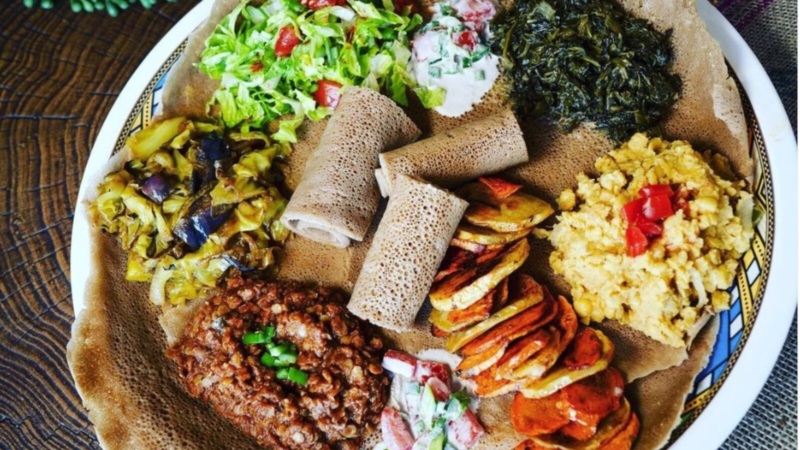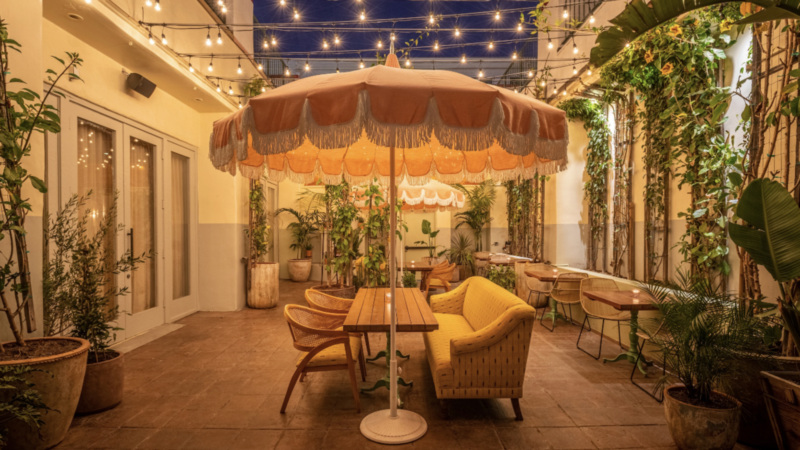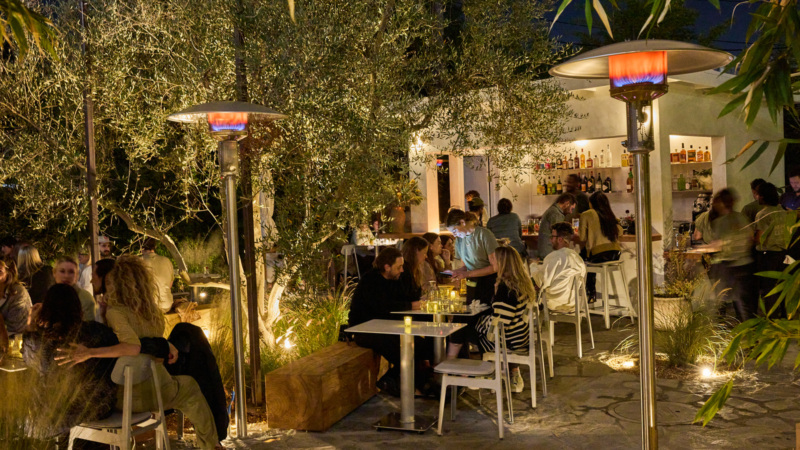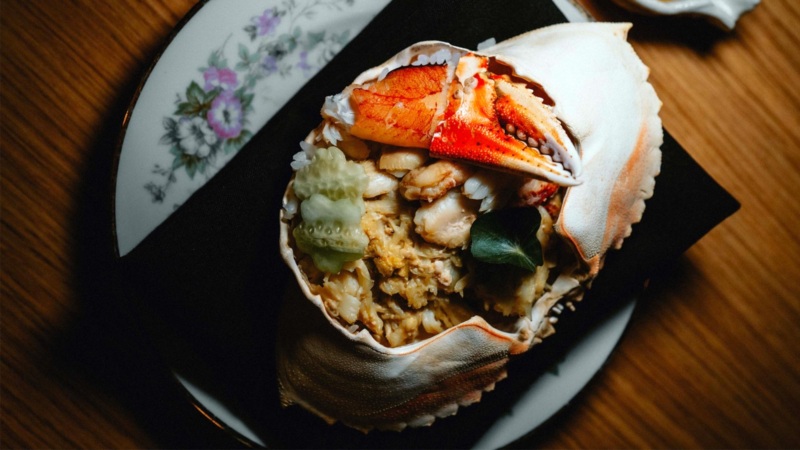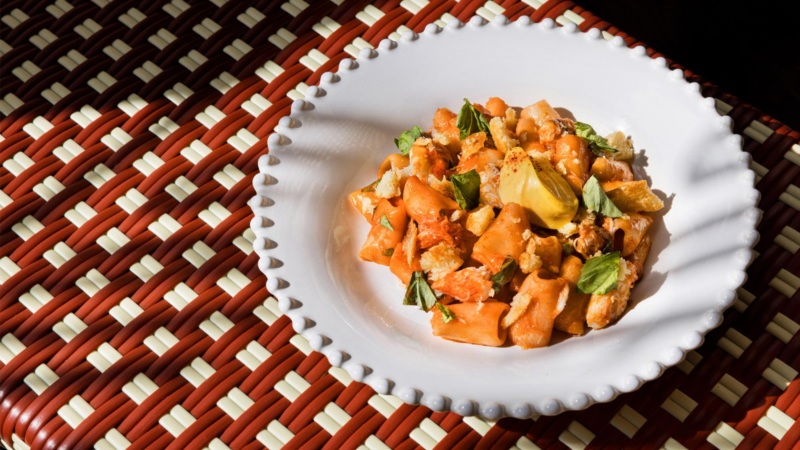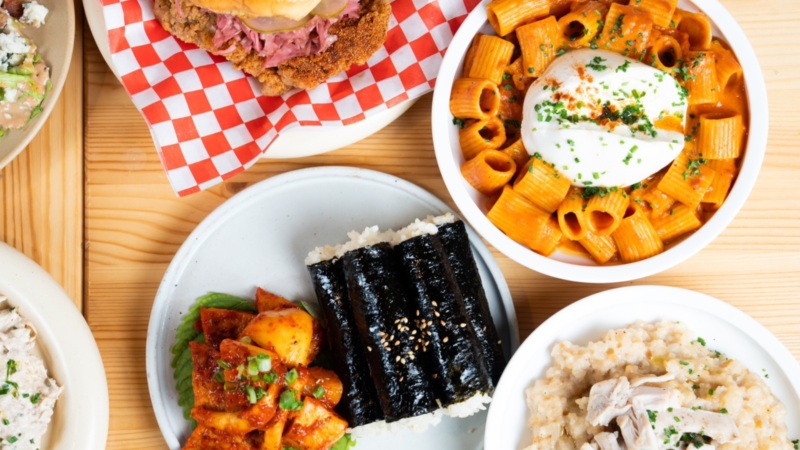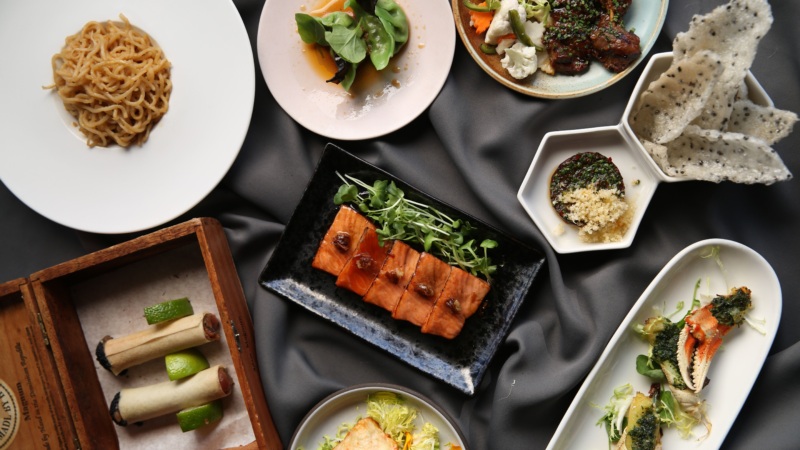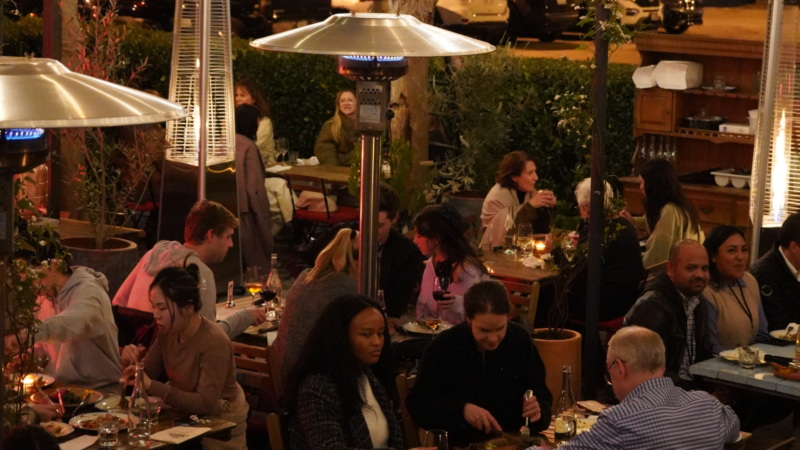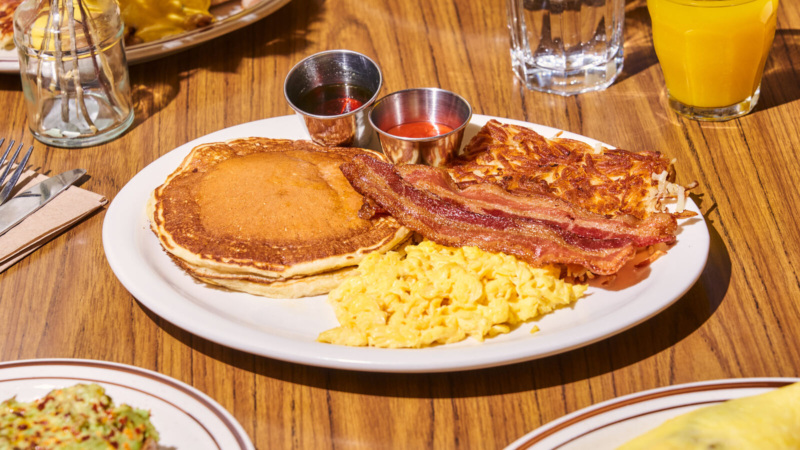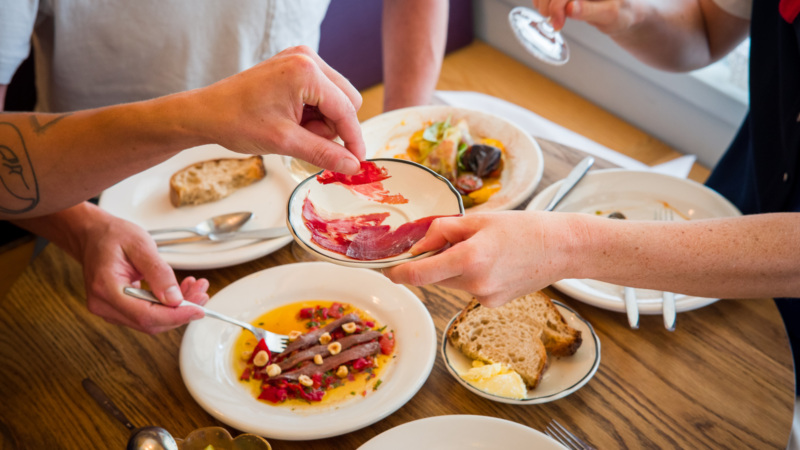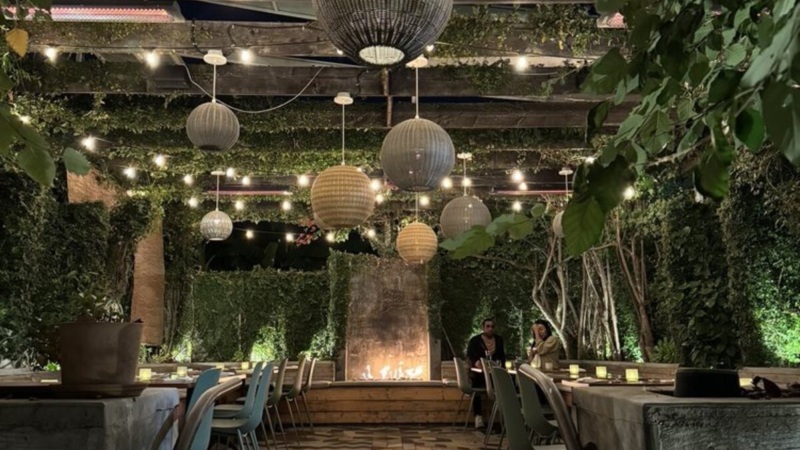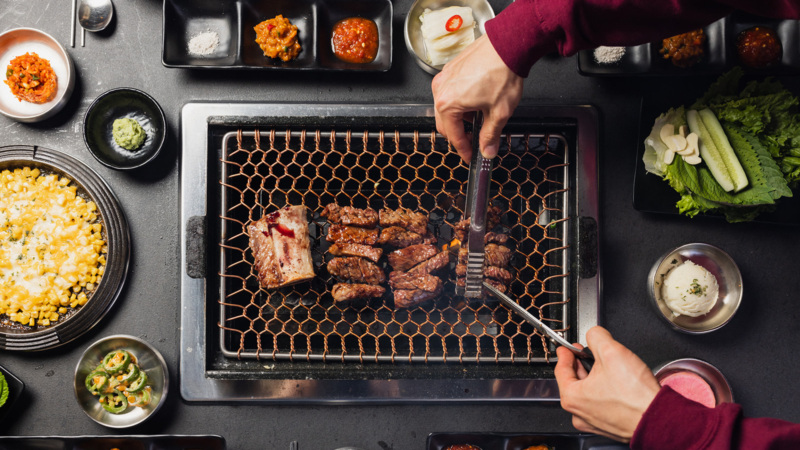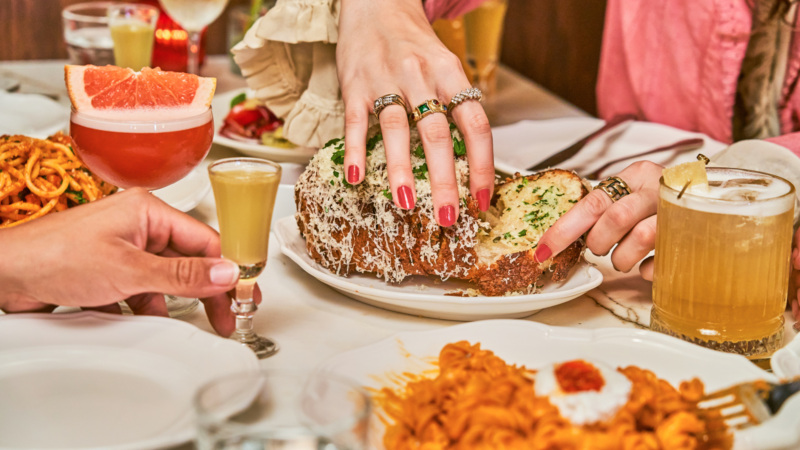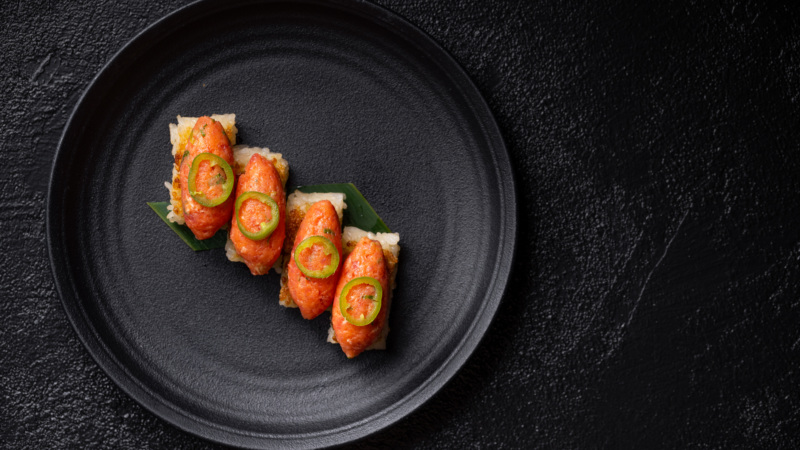
Whether Permanent or Pop-Up, Ray Garcia Insists Broken Spanish Is Here to Stay
Broken Spanish was just catching a groove when it announced that it would close. Open for five years, the Downtown L.A. restaurant had become a bastion of modern Latin cuisine, heralded by everyone from the revered Jonathan Gold to Los Angeles Magazine. Chef Ray Garcia had been declared Chef of the Year by Esquire in 2015. By 2020, the food and cocktails were stronger than ever, the team solidified, and everything looked poised to run well into the decade mark. COVID had other plans.
Like so many coming to grips with the reality of the pandemic, deciding to close was not easy. In the heart of DTLA’s financial and entertainment district, Broken Spanish relied heavily on foot traffic from games and concerts at L.A. Live. With people working from home, offices sat empty, and happy hour and dinner business fell off completely. Yes, it was one of many high-profile restaurants to close around the city, but its loss somehow seemed greater. It felt personal.
Garcia, an Angeleno through and through, grew up on the Eastside, went to UCLA and culinary school here, and landed his first jobs in L.A. kitchens. Before Broken Spanish, he helmed Fig in Santa Monica, where his bright, ingredient-driven menus (and crazy good bacon-stuffed waffles) became destination-worthy. His first solo project was the culmination of all of his life’s experiences — his family kitchen, his grandmother’s table, his professional work, the California flavors and ingredients he loves — and thus ushered in a new wave of Mexican-American restaurants, with a strong personal point of view.
While he’s quick to say he never saw the Broken Spanish closing as permanent, there’s a more concrete return, if a temporary one: with Garcia doing a residency at NeueHouse in Hollywood. It’s a taste of normalcy, in the form of hand-pressed tortillas, duck albondigas, and chicharron with garlic mojo. The setting isn’t the same — the pop-up is based on a large outdoor terrace at the private members’ club — but the soul of Broken Spanish remains. And not just because of a few throw pillows and other decor: The inherent nuances of Broken Spanish itself come through, all the details that Garcia and his team perfected.
Reservations have been going fast, but more are being added weekly; and the residency may be extended. The chef spoke with us about his rollercoaster ride, and his renewed outlook on life, the industry, and the long road back.
This interview has been lightly edited for length and clarity.
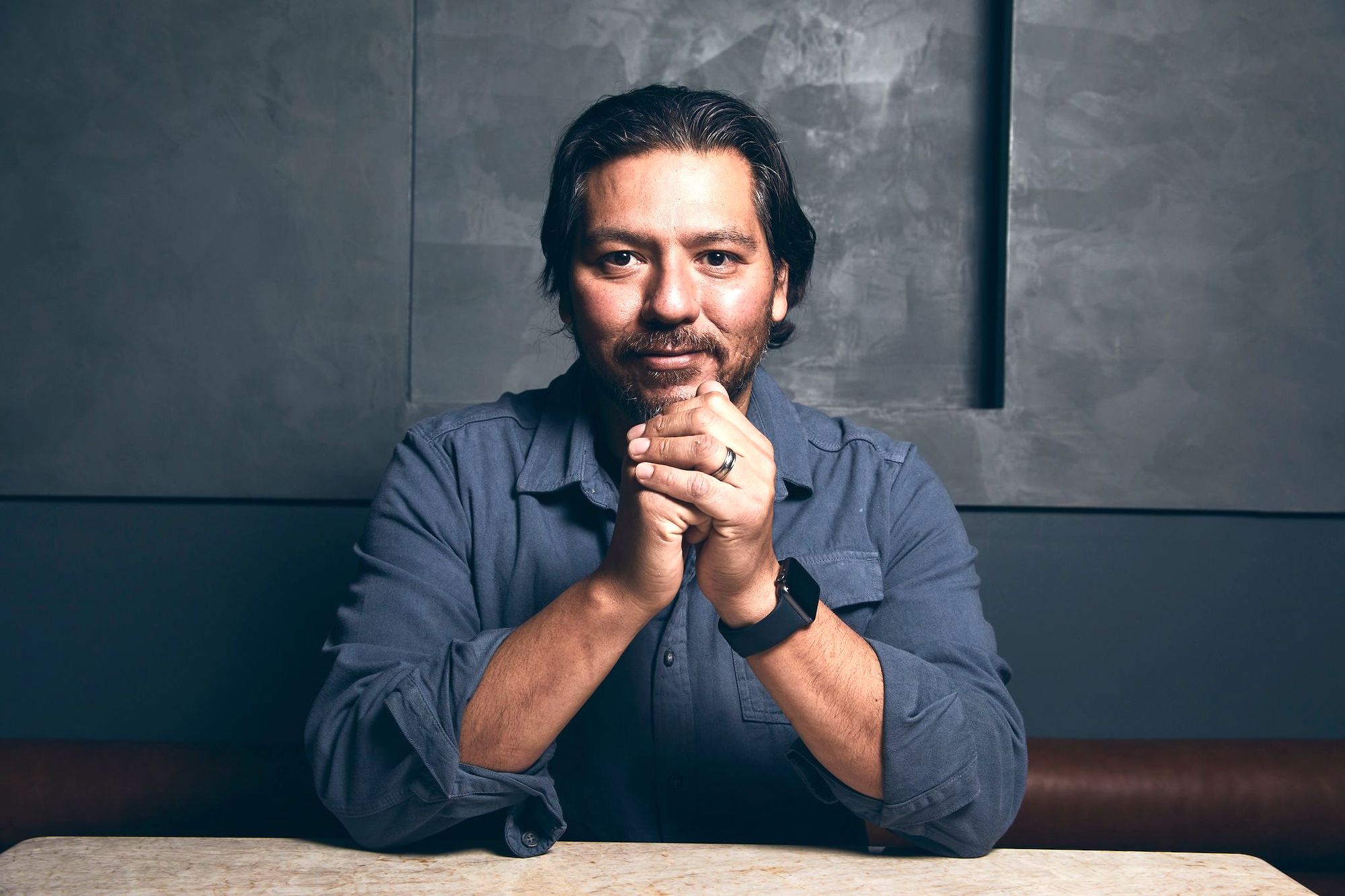

Resy: What does it mean to you to bring Broken Spanish back to life right now?
Garcia: The closing was really devastating for me, and for those involved, because it was so sudden. And it wasn’t for lack of effort or desire for guests to be there, or our staff. We were hitting our stride coming into 2020, having a great January and February, and we had the team where we wanted it. And then all of a sudden, boom. It fell apart. But I never saw Broken Spanish as done, as final. I wasn’t ready to write its obit. We’re not done with the story we’re telling, with the food, the team. It’s more like we’re hitting pause, and it will reappear. And it still will be more permanent at some point. I think that’s one of the beautiful things of the restaurant business is we can reimagine and recreate ourselves.
How did the partnership come about?
I was approached by NeueHouse, and it felt right. When we started the conversation, it came from them understanding how this is a challenging time for the hospitality community, and that we can use this moment to understand and support one another.
What do you mean by that?
It wasn’t just two brands coming together to create a pop-up. It was thinking about the people and everybody involved. I have my general manager Mathieu [Giraud], my sous chefs, and my former cooks together, and we’re all just excited to be able to get back to work. I’m sure it’s the same on the NeueHouse team. It’s great to provide some financial and emotional security and support for them again, especially when times have been so tough.
How does the residency differ from the restaurant? What can we expect?
Mexican food [laughs]. You can expect what we had at Broken Spanish. It’s almost a year later, the restaurant has its own personality, and we want people to feel that when they walk in. Like you’re connecting with an old friend but maybe they have a new hairstyle or a new job, but you’re not going to be like, who is this stranger? The dishes we had at day one at Broken Spanish were not the dishes we had when we shut down. So you’ll get the chicharron, you’ll get the tortillas and lentils, and a few other signature dishes. But the majority of the menu is brand new, with a lot of vegan options. We still celebrate the seasons, sustainability. You’ll see all of that.
It must mean a lot to get the band back together.
For [my team] to come back is huge. One of the hardest things about having to close the restaurant was having those very difficult conversations with my staff. To look them in the eye and say we’re closing was harder than telling myself that. But to send a text or call months later and say we’re getting back in the game, and having almost all say yes, I think it speaks to the culture of that restaurant.
We never hear any stories about you throwing tantrums or treating staff poorly.
That takes money. Lots and lots of hush money [laughs].
No, but seriously.
As a business owner, I’m really proud of the fact that people would stop whatever they’re doing and jump back on to the team.
After the constant rush of restaurant ownership, of being a chef, of all of the press and everything that comes along with it, and then dealing with the fallout of the pandemic, it must have been kind of strange to sit still for a moment. But also terrifying.
At first, like any loss, you have to honor the mourning phase. There’s just a lot to process. Like, is this real? OK, it’s going to be OK. But how? Emotions went from relief to panic. This is the first time since I was 15 years old that I didn’t have a job. I’ve always been working. And then I wasn’t.
So what have you been doing?
I got to mentally and physically reset. Sleep more, work out, actually see my wife and son. We grew very close as a family unit, as I’m sure a lot of others have. I was a second-grade gym school teacher, which taught me a lot about flexibility and patience for myself, my son, and the process that we were all going through. At a certain point, because I can’t just sit still, there were also ongoing projects at home. Let’s reorganize this cabinet or something like that. But it was always on this very cheffy schedule. It was driving my family crazy.
The industry was already facing problems before the pandemic. During this downtime, what did you come to realize about restaurants as a whole? Any revelations?
Some of these issues, like wage disparity, is something we identified early on and tried to remedy even before the pandemic. We made some policy changes internally to help deal with the financial insecurity of some of our staff because it didn’t feel good to have a restaurant in a place where many of my employees couldn’t afford to live. In a city like L.A., you have to work two to three jobs just to survive. It’s not fair to have the kitchen staff work twice the hours and make quarter of the money. So we were able to redistribute some of the house charge. This isn’t a fight most restaurant owners want to get involved in, but it speaks to where we were at the time.
How do you keep that momentum going?
We mostly just want to continue making it feel like a sustainable place to be, where we can provide a living wage and health insurance, and make the restaurant a place where the staff doesn’t just thrive, but where they can grow. That maybe they can set themselves up for bigger positions down the road, whether it’s with me or another.
I think there are a lot of systemic issues that we don’t even think about or realize that need to change, too. I catch myself all the time trying not to refer to the “front of the house” and “back of the house” because just the connotation that’s implied is that, I’m back of the house, I’m not supposed to be seen, not supposed to be heard. It’s just challenging those notions, and also getting our guests to understand because they’ve been on the receiving end of that structure forever.
Is it hard for you in a way, because you’re kind of on this generational cusp, to embrace the necessary changes to move forward?
It’s a huge learning curve because the world has sped up so fast in the 26 years I’ve been in the business. It was very analog. You weren’t expected to be in front of a guest, we weren’t supposed to post every day on Instagram, to engage with regular people. And then you’d have the critic’s review in the paper, and if it was good, you kept going. Also, for chefs of my generation, we were raised a certain way either at home or in the [professional] kitchen. It was a lot more strict. We learned by fear, intimidation, and competition. I’m going to do this or act this way because I don’t want to have a piece of food thrown at me. I don’t want all of my mise [en place] thrown out five minutes before service.
In that kind of environment, you glaze over the actual lessons and only learn to perpetuate and mimic that abuse. That’s how I started off my career and why I want to change that. Not only is that kind of behavior, of course, illegal, but there is no benefit to that kind of training. So I think about how to take a different motivational approach. Instead of trying to scare my staff, I encourage them and show them what they can do and that they do it right.
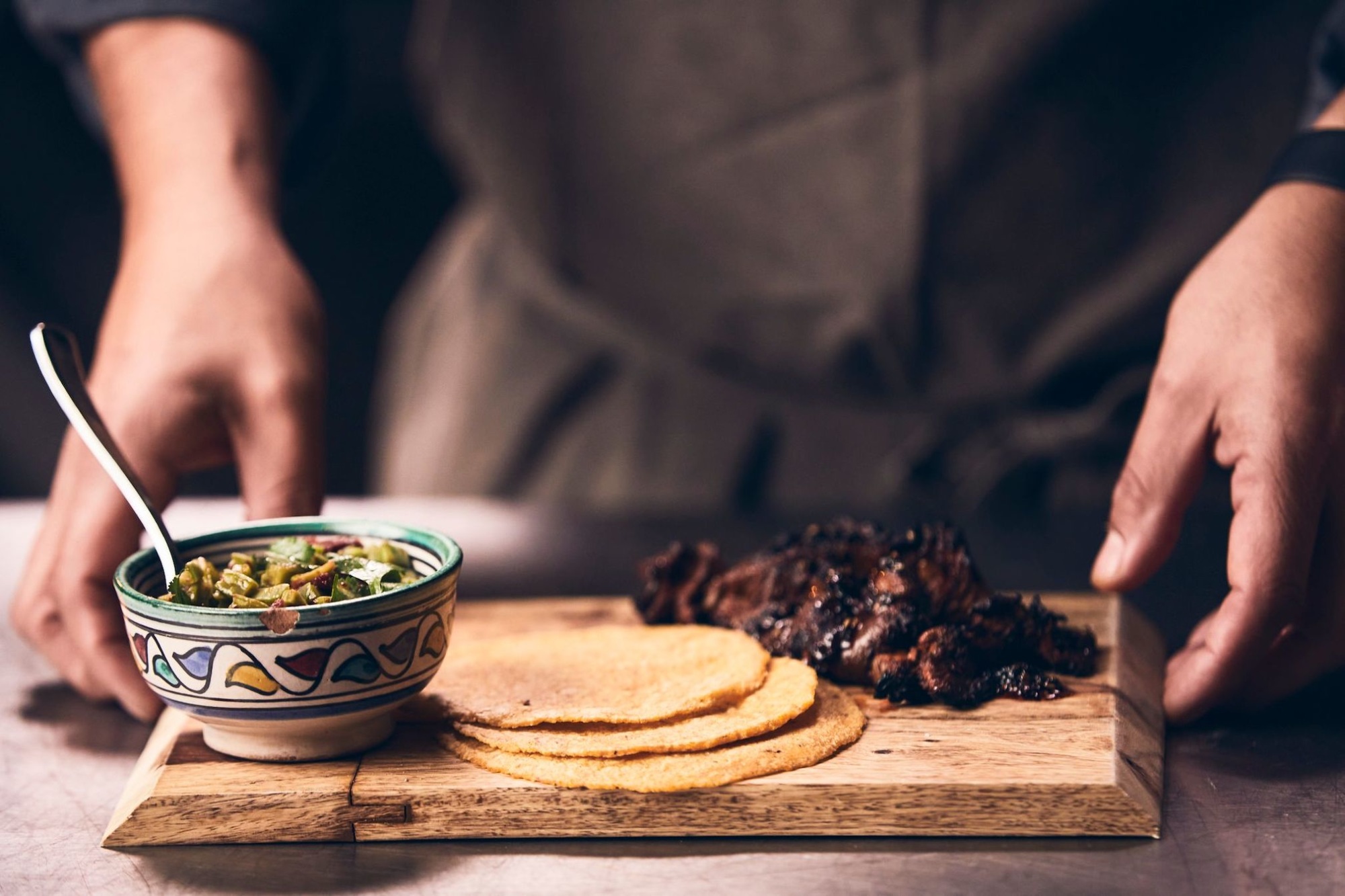
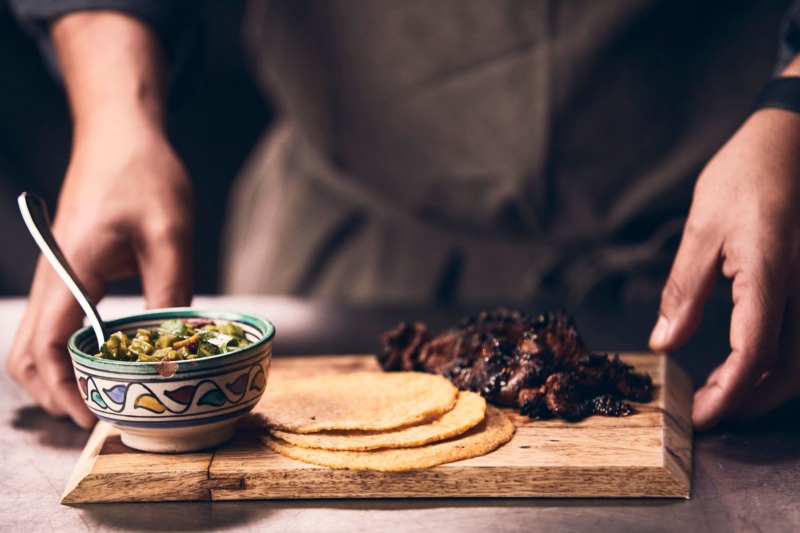
Let’s talk about the Alta California food movement. It’s fair to say that you and chefs like Wes Avila, Carlos Salgado, and Eduardo Ruiz helped usher in a new contemporary style of Mexican or Latin cuisine here. It’s like a no-brainer for L.A. But what took us so long?
When Broken Spanish hit five years, we were talking about how to cement it as an institution like Patina, Mozza, Lucques or Spago. We felt like we had a unique voice. The unfortunate side is that we were unique because there weren’t a lot of people who had the opportunities we had. While the culture for Mexican, Mexican Americans, and Latin Americans is strong by the sheer number of people who identify as such in L.A., our voices are not often heard. That’s starting to change.
Our grandparents came to a new country, and the way they were treated, or the work they were assigned, did not always inspire them to be entrepreneurs. It was more about survival. But that humility and hard work inspired all of these other things. Generation after generation, through education and everything I had access to, people like me and the others you mentioned, we’re finally in a position to say, “I’m going to be the boss.” And my son will have even more opportunities. It’s not something that was guaranteed; everyone worked very hard to get us there.
It’s unfortunate that there are only a handful of restaurants doing this, that Alta California cuisine is still not very prevalent. But look what we’re up against. I mean, you have more Italian restaurants on San Vicente Boulevard alone than high-end Mexican restaurants in all of California. So I think it’s just something that we’re still actively looking to change. We’re appreciative of what we have, and that we’re not done pushing ourselves for more.
This was clearly your path.
Well, I make it look easy. Let’s see how many gray hairs I have now.
Chefs now use everything in their toolbox, from their grandma’s recipe book to doing an internship at high profile restaurants around the world. How happy are you to see that combination really take off?
Everyone wins, the chef, the diner, everyone involved. When you cook with context and connection, you’re going to produce something that’s more unique and genuine. If you just cook the kind of food you’re fond of, or if it’s a craft you’re trained in, you’ll probably do just fine. But if something speaks to you on a more personal level, whether it was food traditions handed down by your family or just a sense of place within your own kitchen, you’re going to produce something special. In a perfect world, everyone should be able to find a way to bring that to the diner.
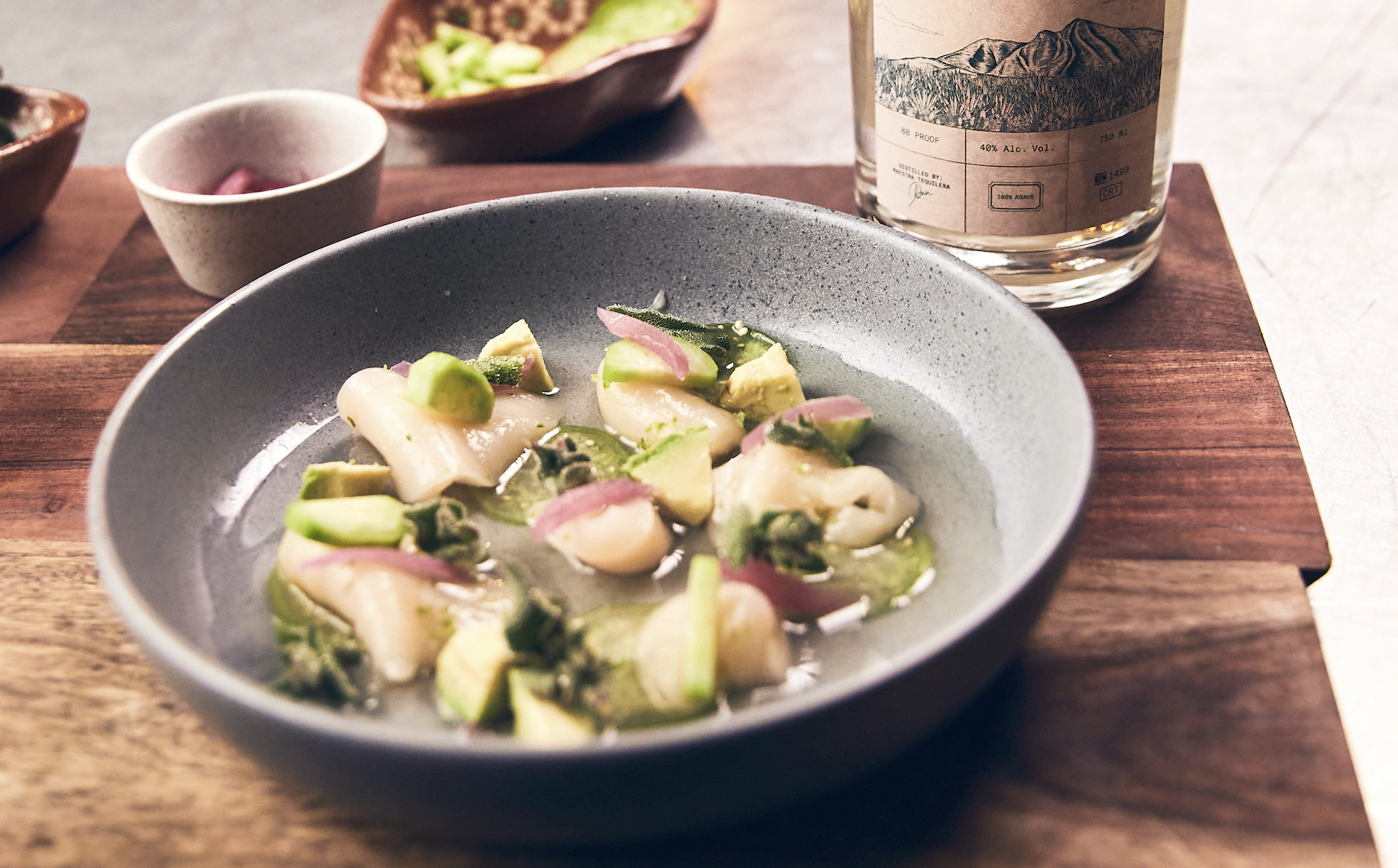

And it’s not just with Mexican cuisine, it’s Vietnamese, Korean, Japanese, Taiwanese …
That people like Charles Olalia can work through his passion for Filipino food, Mei Lin can work with her Taiwanese roots at Nightshade, or Ori Menashe at Bavel, it’s great to see and hear those voices. But with the public, how do we change the perceived value of these cuisines? People say, “Oh, I’ve never had Mexican food like this, it’s amazing. But why is this taco $15?” That’s the part of the conversation people don’t want to have. They want it to taste good and know the stories, but they don’t want to acknowledge it with U.S. currency.
What do you see now for the restaurant industry as a whole? What are your hopes for a post-pandemic world, especially in food?
I’ve seen restaurants really come together to survive. Sharing staff, space, vendors, all of that. I’d love to see that expand past those small business owners. I’d like to see the public have a better understanding and appreciation of what goes into running a restaurant. I’d love to see, you know, not just giant corporations getting rich off of the pandemic, especially at the cost of small business owners.
What’s the future look like for Broken Spanish?
It’s a very specific L.A. restaurant and brand, so I think there is a future here for Broken Spanish. But it has to be the right place, time, and circumstances. Now is not the time to rush into that. It’s a time to better ourselves, and maybe that’s through pop-ups and temporary residencies. I’m working on other things outside of the city and Broken Spanish, too. To grow personally but also grow the brand. I don’t know what the immediate future holds other than continuing to try to learn and grow and reconnect with the city that’s shown us so much support over the last five years.
Broken Spanish at NeueHouse runs through April; reservations can be made here.

